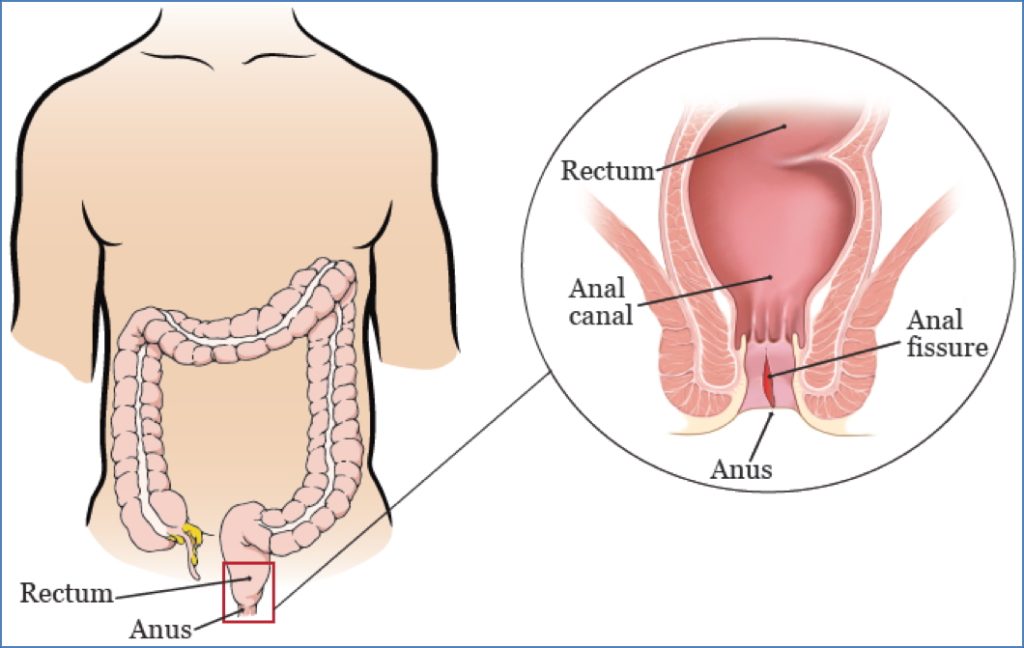Table of Contents
Overview
Anal fissures are painful cracks or tears in the lining of the anal canal, typically caused by trauma during defecation or due to chronic gastrointestinal conditions. They are a common cause of rectal pain and bleeding, particularly in young adults and postpartum women. Most cases are self-limiting, but chronic fissures may require surgical intervention. This page outlines the causes, presentation, diagnosis, and management of anal fissures.
Definition
An anal fissure is a longitudinal tear in the anoderm of the anal canal, usually located posteriorly, extending outwards from the anal verge.
Aetiology
Common Causes
- Overstretching of the anal mucosa, often due to:
- Constipation
- Prolonged diarrhoea
- Postpartum trauma
- Anal sex
- Crohn’s disease
- Older adults: Relative ischaemia of the posterior midline anoderm
Morphology
- 80% occur posteriorly
- Extend outward from the anal opening
- May be superficial or deep
- Chronic fissures may show sentinel pile, hypertrophied anal papilla, or fibrotic edges

Clinical Features
- Pain – Sharp, severe, burning pain during and after defecation
- Bleeding – Small amounts of bright red blood on wiping or in stool
- Itching – Due to mucosal irritation
- Constipation – Often due to fear of pain, worsening the cycle
- Discharge – May occur with chronic or infected fissures
Differential Diagnosis
- Crohn’s ulcer
- Anal cancer
- Syphilitic ulcer
- Herpes simplex virus
Management
First-Line
- Topical moisturisers/emollients
- Stool softeners and high-fibre diet
- Topical vasodilators (e.g. glyceryl trinitrate or diltiazem)
- Analgesia and warm sitz baths
Surgical (if chronic or refractory)
- Lateral internal sphincterotomy – Gold standard for chronic fissures
- Botulinum toxin injection as a non-surgical alternative
Summary
Anal fissures are painful tears in the anal mucosa, usually caused by constipation or inflammatory bowel conditions like Crohn’s disease. While most are self-limiting with conservative therapy, chronic cases may require surgical sphincterotomy. For a broader context, see our Gastrointestinal Overview page.